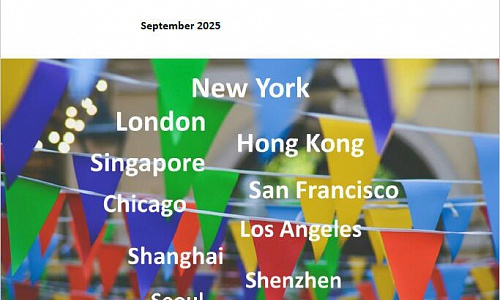Author: Song Ding, Senior Research Fellow of CDI
Editor’s Note: There are several issues to be considered as for Xiongan New Area which is aimed at accepting non-capital functions from Beijing, exploring a new model of optimized development in densely-populated areas, and restructuring the urban layout in the Beijing-Tianjin-Hebei region.
 The Establishment of Xiongan New Area is expected to help phase out some non-capital functions from Beijing, explore a new model of optimized development in densely-populated areas, and restructure the urban layout in the Beijing-Tianjin-Hebei region. However, there are several issues to be considered.
The Establishment of Xiongan New Area is expected to help phase out some non-capital functions from Beijing, explore a new model of optimized development in densely-populated areas, and restructure the urban layout in the Beijing-Tianjin-Hebei region. However, there are several issues to be considered.
Strategic Positioning and Industrial Development
The most practical functional positioning of the Xiongan New Area is to accept non-capital functions unloaded from Beijing and to foster a new growth engine for the Beijing-Tianjin-Hebei city clusters.
In transferring the "non-capital" functions out of Beijing, it is essential to relocate state-owned enterprises especially the lower-end traditional industry chains of these enterprises. If these enterprises and industries were simply moved to the Xiongan New Area, then the new area would be home to the unwanted and lower-end industries and over-staffed state-owned enterprises of Beijing. This would be going against the positioning of the new area. Despite institutional reform and industrial upgrading in the process of the relocation, it would be extremely difficult given the fact that these industries and enterprises have been developing for a very long time in Beijing with a lot of deep-seated problems. Major changes are unlikely to take place with the sudden and mass relocation to the new area.
Lessons from the Development of the Binhai New Area and Caofeidian
It is not the first time to establish a state-level development zone in the Beijing-Tianjin-Hebei region. Years ago, Tianjin set up the Binhai New Area with the hopes that it would become a leader in the integrated growth of the Beijing-Tianjin-Hebei region. Now more than ten years have passed, but the Binhai New Area has failed to achieve the initial strategic goals in terms of institutional reform and regional development. As to Caofeidian located in Tangshan, it also cherished the vision of transferring non-essential functions of Beijing, only to soon fall into predicament because of disadvantages in location, population, capital, industrial structure and operation mechanism, etc.
The development of the Binhai New Area and Caofeidian sends an important signal to the development of the Xiongan New Area, which is currently in the limelight. The new area is set up against the backdrop of huge pressure for transformation and upgrading of the Chinese economy. It is necessary to learn from the experiences in the development of the Binhai New Area and Caofeidian.
Paralleling Shenzhen Economic Zone and Pudong New District
The aim of Xiongan New Area is to rival two famous regions, namely, the Shenzhen Economic Zone and Pudong New District. However, this does not mean that the new area can copy the experience of Shenzhen and Pudong.
In terms of regional layout, Shenzhen borders Hong Kong, whose market economy and global background played a fundamental role in promoting Shenzhen’s growth, while Pudong is situated in Shanghai, the biggest financial center of China. Xiongan is different, as it is over 100 km away from Beijing and Tianjin. From the perspective of urbanization, Xiongan features a lower starting point and greater difficulties.
Time-wise, Shenzhen and Putong rose in the 1980s and 1990s respectively, at a time of China’s reform and opening up, during which the annual GDP growth rate could soar to a startling 20% and even 30%. The Xiongan New Area, however, is set up at a time of economic transformation and upgrading, which means that much of the experience of Shenzhen and Pudong are no longer applicable in the current situation.
In terms of industries, at the early stage of its development amidst an extremely weak national economy, Shenzhen was able to make full use of industries, technologies, capital and management of Hong Kong, all of which were the most advanced in China at that time. Pudong is home to advanced industries in Shanghai, including large numbers of headquarters of foreign-funded businesses. In contrast, the industries labeled “non-capital functions” of Beijing, most of which are neither high-tech nor advanced, would be moved to Xiongan. \
It is evident that if Xiongan is to parallel Shenzhen and Pudong, it should not only undertake the “non-capital functions” of Beijing, but also should build industry chains of high standards. This, however, poses great challenges.
Development Mode
The development mode of the Xiongan New Area shall firstly be supported by dedicated state policies, including the preferential policies in tax and personal income. Secondly, decentralization of power is needed to enable pilot reform by adopting a negative list. Thirdly, it shall build an institutional mechanism that truly depends on market. Fourthly, an industry framework shall be built to promote advanced industries as economic engines. Fifthly, it shall allow for experiments in legislation and law-based management. Lastly, a fundamental pattern featuring small government and big market shall be in place.
Xiongan is situated near the capital which has strong administrative power in northern China, where the role of market is relatively weak It is therefore not an easy task to break away from the ineffective development mode in the past. The only way out, nevertheless, is to tackle these difficulties and create a new development mode in northern China.
Environmental Security
Smog is prevalent across the Beijing-Tianjin-Hebei region, and Xiongan is no exception. Xiongan is home to Baiyangdian, the largest lake in North China, which had once dried up. Upon setting up, the new area faces daunting challenges in environmental protection. In the coming years, Xiongan will enter into a stage of rapid development, which will further increase the pressure on the environment. Globally, there have never been cases of vigorously developing economy which keeps the environment intact at the same time. Challenges for the environmental regulators of Xiongan are severe.








